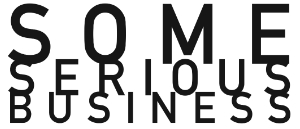Red Cell #FiftyQuestions
What artist(s) do you consider most influential to your ongoing development as an artist?
Instead of whittling it down, a few that come to mind are: Brian Eno, Antonin Artaud, Maya Deren, Marcel Duchamp, Carolee Schneemann, Guy Debord, Yoko Ono, Kathy Acker, Vali Export, Tristan Tzara, Eva Hesse, and Laurie Anderson.
What has been the most significant challenge you’ve faced that you overcame to continue your art practice?
Overcame may be overstating it, but depression and doubt are ever-present frenemies. They are a challenge that comes with each endeavor. Overcoming is a case-by-case reality.
What one sentence do you hope describes how your art practice will be recorded in history, and why?
My motto is: Create culture, don’t follow it.
If you could travel in time, within what era or milieu would you most like to have an artist residency? And why?
I would want to exist in 1949. It is a liminal space between the big band era and the rock era that provided an unusual platform for creative art works of every kind.
What is your current guiding motivation to work and/or express yourself?
Because the world needs more sophisticated deviants in it.
Who or what would you most like to collaborate with?
Easy. Laurie Anderson. Even at her worst, she is a force of nature.
What do you worry you will never be able to express?
Everything.
Who has been your greatest mentor, living or dead, real or imaginary?
William S. Burroughs was my first real excursion into the sub-rosa world of anything-is-permissible work. He has opened a thousand doors to other artists, musicians, writers, and glamorous criminal agents for me. Even his more controversial real-life problems have inspired me to educate myself on everything from feminism to how to talk about creative work made by difficult people.
How would you describe your ideal relationship with other artist colleagues?
I find myself working at my highest level when I’m in a long-term duo, passing ideas back and forth, each person trying to impress the other with how they evolve the original idea. There’s an intimacy there that hosts a unique creative outlet.
When does Joy tend to visit you?
I find joy in hindsight, generally. It rarely makes an appearance for me before or during the act of creation, instead choosing to become a device of memory.
Who or what do you feel is most invisible to others in your practice?
I have worked a lot with impermanent and ephemeral works that must be experienced at the time of creation to feel the full impact of the work, and it can be a challenge to not only document that, but then to portray the emotional content afterward is often problematic.
Do you have a particular skill or knack of which you are most secretly proud? Something you feel you can do that few others can, no matter how small?
I think I’m most proud of my ability to ferret out interesting and unusual work with discernment and objectivity. Just because something is heartfelt, honest, or someone has spent a lot of time on it, does not mean the work is “good.” Being honest about quality and noteworthiness is something I pride myself in.
Which would you prefer: to be a rogue artistic outsider or to fit within a community of similarly minded creators?
Hands down, a community… of rogue artistic outsiders.
Red Cell is a curator, artist, arts facilitator, and musician with 20+ years’ experience in contemporary arts and music non-profits. Red curated The Process, an alternative arts and music non-profit, bringing hundreds of artists and performers to Santa Fe, NM. Red co-founded The AHA Festival of Progressive Arts, the largest alternative arts festival in the Southwest. Red served as Director and Curator of the MOV-iN Gallery, the only New Media and time-based art gallery in the Southwest. He was also half of The Product Division, who had the honor of being the first artists-in-residence for the William S. Burroughs estate.

